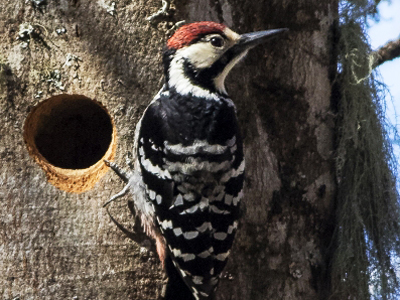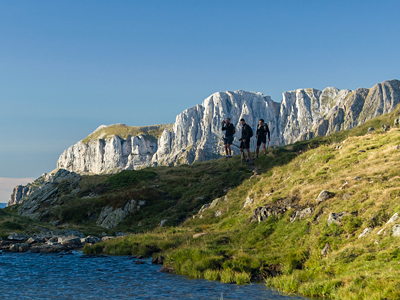Searching Birdingpirineos.com
BIRDS, ECOSYSTEMS and BEST SEASONS
Define search criteria: birds, ecosystems or seasons and consult the Birding Pyrenees database.
Eurasian Griffon Vulture
Ecosystems: RUPESTRIAN
Seasons: January | February | March | April | May | June | July | August | September | October | November | December |


SCIENTIFIC NAME: Gyps fulvus
FAMILY: Accipitridae
DESCRIPCION: An easy raptor to identify, thanks to its large size and characteristic profile when in flight, with its broad wingspan and short tail. It is cinnamon brown in colour, except for its head, and its neck which is covered by a whitish ruff. It has a wingspan of up to 2.5 metres and can weigh up to 9 kilos. It has a notably long neck covered in down and a powerful beak, both of which are specially adapted to prod and probe the carrion that provides it its food. When seen in flight it is easy to identify because of its long, broad wings and short tail.
STATUS IN ARAGON: R Nr (Resident, breeds regularly)
BREEDING PROBABILITY: Breeding highly likely
REPRODUCTIVE: Yes
LOCAL STATUS: Resident
MONTHS: All
ECOSYSTEMS: Rupicolous
DIET AND FEEDING: This is a gregarious bird that gathers in colonies along rocky cliffs to breed, rest and sleep. It feeds on the carcases of large animals and therefore needs to fly long distances to track them down. The detection of carrion attracts a large number of these birds, which flock to the area.
HABITS: It nests all over La Jacetania to altitudes of 1900 metres, in areas of rock faces close to grazing cattle. The crude nest is usually situated on cliffs, ledges and outcrops, with sticks, straw and wool being used as building materials. Incubation takes almost two months, with both male and female birds taking part in the process. The chick is fed at the nest for a period of up to four months, before leaving it, never to return.
THREAT OF EXTINCTION + CRITERION: CNEA (National Catalogue of Endangered Species): Not classified: CREA: Not included
ROUTES: 2 (Linza – Gamueta woodland) 3 (Zuriza - Achar de Alano), 8 (Somport / Canal Roya), 9 (Foz de Biniés) and 13 (San Juan de la Peña); it is easy to see this bird from any of these routes.
SPATIAL DISTRIBUTION: Cliffs and crags at altitudes of less than 2000 metres.




